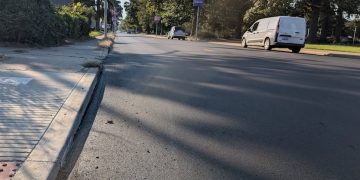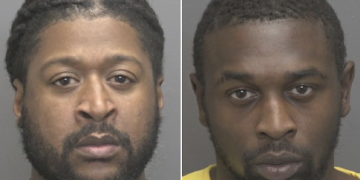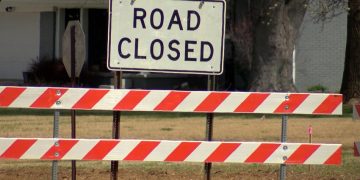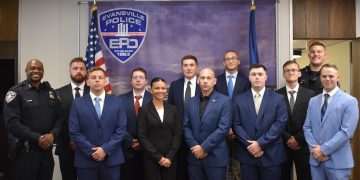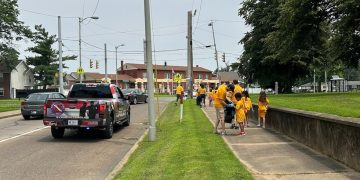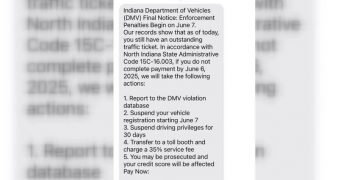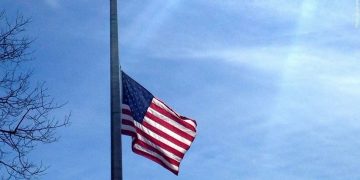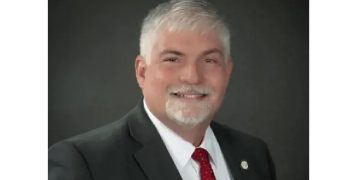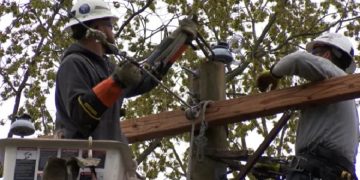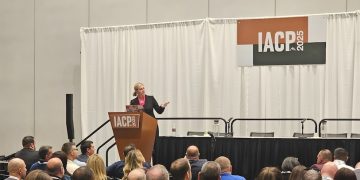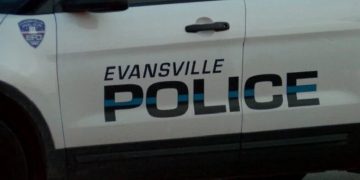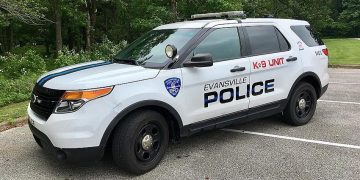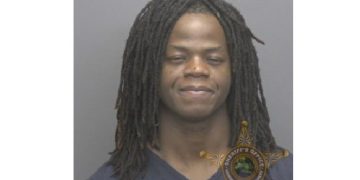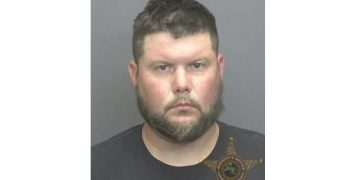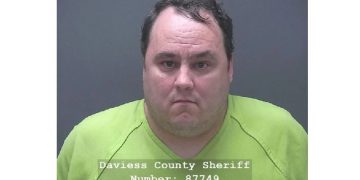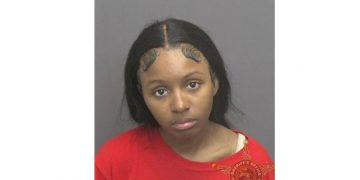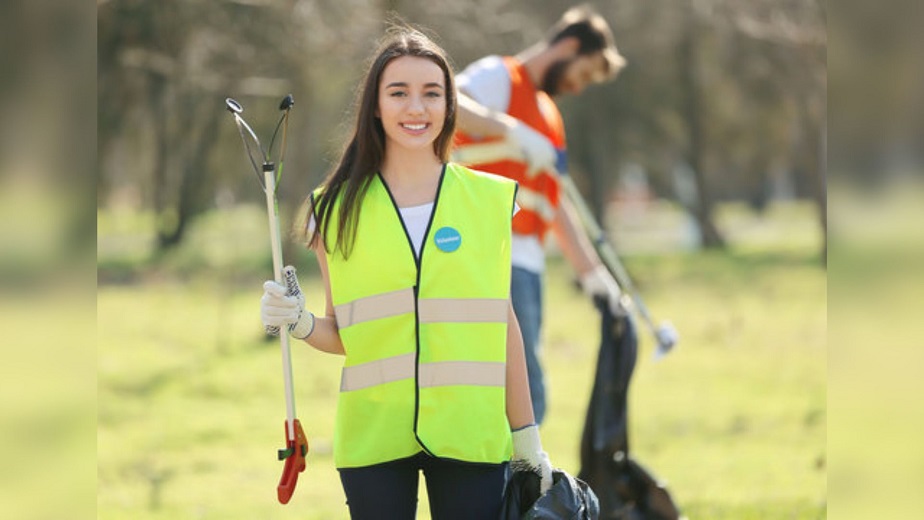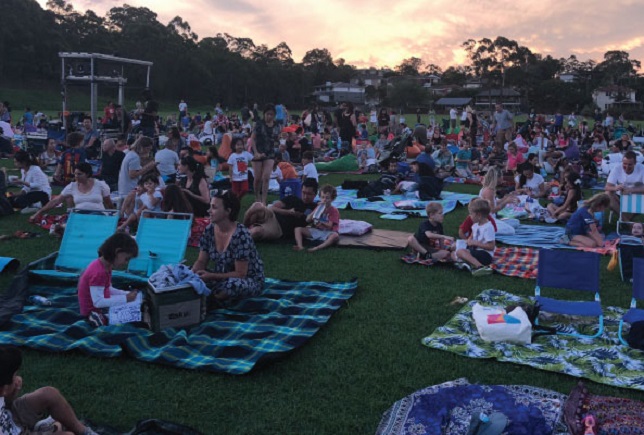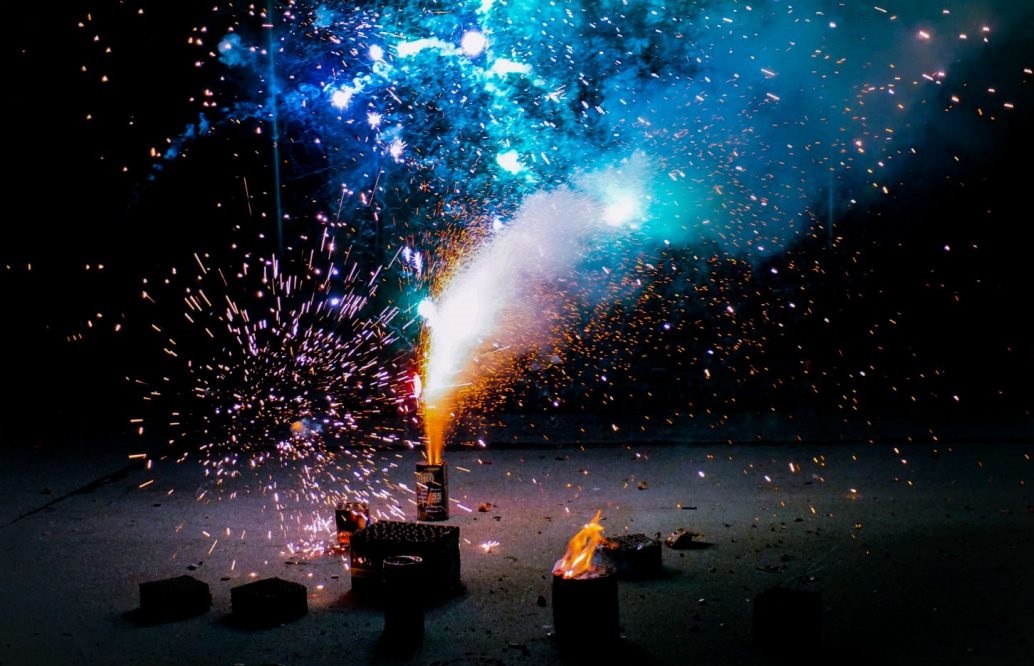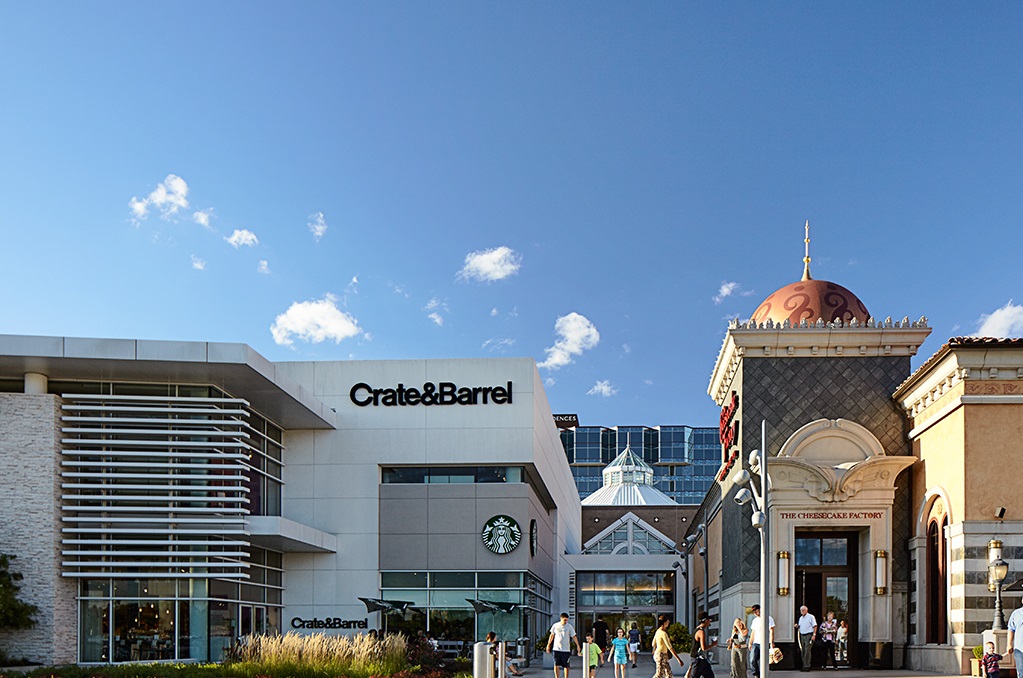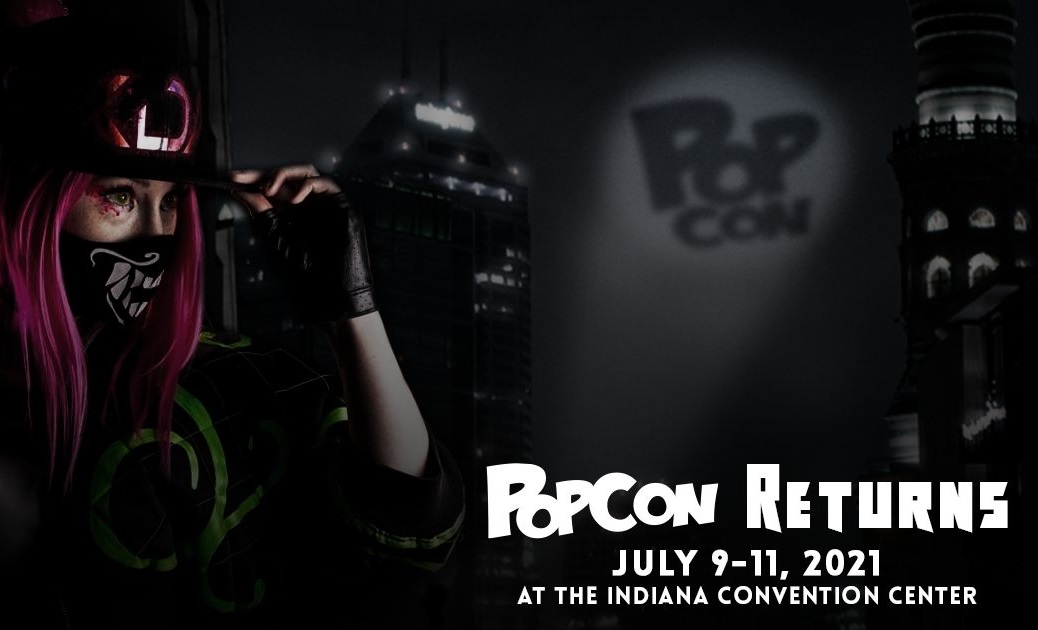On Saturday, Bloomington’s second “Black Lives Matter” street mural was painted on 6th Street between College Avenue and Walnut Street. That’s the north end of the courthouse square.
The first one was painted on Elm Street.
The lead artists on the project were Raheem Elmore and Christina Elem. Elmore is working on a dual doctorate in English and African American and African diaspora studies at Indiana University. Elem is graduating from IU this year and taking a job with the Bloomington Economic Development Corporation.
The completion of Bloomington’s second “Black Lives Matter” mural surely counts as a win. Elmore and Elem did great work as lead artists. It was city staff from several departments and about 45 rank-and-file volunteers from the community who came together on Saturday morning to make the mural happen.
It’s a moment to feel good.
But the mural’s backstory includes a reminder that how good we feel about seeing and saying the phrase “Black Lives Matter” is not a great way to measure the impact of that phrase on our community.
Here’s a glimpse into that backstory.
Saturday was a spectacular day for painting a street mural. By noon, when volunteers were scheduled to arrive, the temperature had reached 60 degrees, but the full sun made it feel warmer. By 4:30 p.m. when the mural was declared complete, the thermometer read 74 degrees.
Around 1 p.m., as volunteers were helping to fill in the mural’s block letters with red, green, and black—the colors of the Pan-African flag—a quiet protest unfolded.
Some of the volunteers might not have noticed the Black woman who walked to a spot among the letters, under the “I” in “LIVES” and next to the “M” in “MATTER,” and sat for a few minutes on the pavement before departing. She held a sign that read: “If Black Lives Matter, protect Black women.”
The woman was Nichelle Whitney, who until April 20 was president of the Banneker Community Center’s advisory council, which is the entity of the city of Bloomington that has been managing the project.
Whitney resigned the position after a meeting of the council that day.
One of the points of controversy is Whitney’s contention that the city’s administration wrested control of the mural project from the advisory council.
In a phone conversation shortly after the advisory council’s meeting, she told Erik Pearson, who’s the Banneker Community Center facility/program coordinator: “I feel completely ambushed by you, and Sean [Starowitz] and Raheem [Elmore] in that meeting.”
Sean Starowitz is the city of Bloomington’s assistant director for the arts. Raheem Elmore is one of the two lead artists on the mural project—the other is Christina Elem.
I attended that day’s (April 20) BCCAC meeting, which was held on the Zoom video conference platform. And on that occasion, I departed from the custom that journalists merely ask questions during public commentary, and don’t offer an opinion.
I was not there to cover the meeting for The Square Beacon. I was there to offer my perspective on Elmore’s work the previous weekend (April 17), which was the date originally scheduled for the mural painting.
The cold morning rain had spoiled the planned activities of that Saturday. After the rain stopped and the pavement had dried out, Elmore returned to the 6th Street site. With the help of a volunteer, he spray painted the outlines of the letters, to set up the project for the rain date.
It was on my way home when I encountered Elmore starting his work. I saw it as a feel-good story a half block away from where I live: Artist salvages something out of an otherwise lost day.
I don’t like feel-good stories. I don’t like reading them. I don’t like writing them, even when they probably need to be written. This was a feel-good story right in my backyard, and because of its unplanned nature, I didn’t think anyone else would be writing it.
So I took photographs and wrote a feel-good story: “Black Lives Matter” street mural work put off by morning rain, day still not a washout
I later heard from Elmore that his activities that day had caused him to be removed from the project. The activity had taken place outside the agreed-upon protocols for the project—it had been cancelled for that day.
On the afternoon of April 20, Elmore sent an email asking me to attend a public meeting later that day, when his removal of the project would be discussed. He asked me to advocate for him, or at least share my perspective on the way he had conducted himself during his work.
One way to dodge the request would have been to mumble something about journalists maintaining critical distance and objectivity. I felt like the situation demanded more from me than that.
A Black man had made a reasonable request for some help from me, a white man, and it was help that I was in a unique position to provide. No one from the city of Bloomington had been on site, to observe the way Elmore conducted himself in his interactions with the public.
Some motorists, who had parked on the block after Elmore re-started the work, were subject to some inconvenience. To do the work of outlining the letters, Elmore and the volunteer who helped him, the artist known as Fogg, moved the orange barriers at the ends of the block back into place.
Here’s an excerpt from the prepared remarks I made at the public meeting: “In their interactions with the people in the public who needed a way to exit the area behind the barricades, what I saw was that the two artists (Mr. Elmore and Fogg) were pro-active, friendly, respectful and helpful. I think their conduct towards the public and towards each other during the work could count as a clinic on how to be a great ambassador to the public for the city of Bloomington.”
I stand by those comments. I would say them again. But I made a mistake in not doing the basic journalistic work of understanding better the makeup of the public body I would be addressing—the Banneker Community Center Advisory Council.
I had reached out to the city’s communications director, Yael Ksander, who works in the mayor’s office. I wanted to know if she had any insight into what was going on that had led one of the city’s advisory council’s to remove a Black artist from a “Black Lives Mural” project—because that sure seemed like a very bad look for the city of Bloomington.
When she returned my call, Ksander told me the mural project belonged to the advisory council, and that their concern about Elmore’s actions was based on the idea that he worked as an individual, outside the agreed-on parameters, which made it against the spirit of the mural project’s concept. The concept was very much about community gathering and collaboration.
In any case, that reinforced my intent to focus my public commentary on Elmore’s behavior during the work. I believed Elmore was off the project. So I mostly wanted the public record of the advisory council’s meeting minutes to help document the context of the decision.
I wanted to make it easy for Elmore to make his case in the future: Even if he might have been judged to have erred in choosing to undertake the letter outline work when he did, he did not err in the way he interacted with the public.
A couple hours later, when the Banneker Community Center Advisory Council meeting convened, Nichelle Whitney’s square popped up on the Zoom meeting screen. If I ever knew she served on the BCCAC, I had not remembered it. So at that moment, I thought: Maybe Elmore has an outside shot to be reinstated on the project.
That’s because I had taken Elmore’s perspective on his situation to be representative of the whole Black community’s perspective. One of the teachings in current anti-racism education is: The Black community is not monolithic; it is multifaceted.
It’s easy to nod along to that when someone says it: Of course, the Black community is not monolithic, and anyone would be stupid to think it is. It’s harder in practice to check ourselves when we act exactly like we think it is monolithic.
That’s why on Friday, the day before before the mural painting, I said in an email message to Whitney: “I thought I was doing right in terms the respect that was owed to a Black man. I did not consider that I might be doing the wrong thing in terms of the respect that is owed to a Black woman. I am sorry for that.”
I should have made an effort to touch base with Whitney, the president of the council, before the meeting.
Whitney’s perspective was not aligned with Elmore’s. In fact, it was Whitney who had contacted Elmore to convey her displeasure about Elmore’s “rogue” activity.
The conversation between Elmore and Whitney apparently did not go well. But it did result in an invoice from Elmore for some of his work on the project up to that point, which was paid by The Guarden. That is Whitney’s company, which provides diversity and inclusion training.
From Whitney’s perspective, the payment was part of a worked-out agreement that Elmore would agree to step away from the project. In her resignation email, Whitney writes: “Raheem verbally agreed to the separation of duties, and even negotiated the severance happening after he received funding from The Guarden.”
At the advisory council’s meeting, Whitney felt ambushed by Pearson, the Banneker Community Center facility/program coordinator, because she understood his position to be that he supported Elmore’s severance from the project. At the meeting, he expressed support for finding a way to keep Elmore on board.
Whitney’s was the sole vote of dissent on the BCCAC vote to keep Elmore on the project. Joy Roberts, who with Whitney conceived Bloomington’s BLM street mural projects, abstained.
If the outcome had been different, I think the irony of a Black artist being removed from a “Black Lives Matter” mural project might have been mitigated by the idea that the outcome stemmed from respect for the leadership of Black women. It’s a moot point, now.
In the phone conversation between Whitney and Pearson, shortly after the advisory council’s meeting, Whitney confronted Pearson about the factors included in the context of the position he had taken.
The factors included an apparent choice he had made between protecting a city employee, a white woman, instead of protecting her, a Black woman: “You have no idea. You have no idea what I am going through, yet you made a conscious decision to protect her and do harm to me, someone, who has been a great ally and supporter for you?? And the Banneker?? Really?! That doesn’t make it any better. In fact, it makes it worse because at the end of the day, we’re all human.”
It’s easy to nod along to the idea that we’re all human. It’s sometimes harder to act that way.
Humanity, of course, is very much about imperfection.
I spoke to Elmore on Saturday as the work was winding down, about the drip-drops of yellow paint outside the lettering, and the places in the borders that were not perfectly sharp. He was not inclined to call them imperfections or mistakes. “It’s evidence that human beings made it,” he said.
I think Whitney’s brief sit-in during Saturday’s mural painting should also be recognized as evidence—that it was human beings who came together to organize the project, that the human interactions involved weren’t perfect, and that the good feeling created by the project was not universal.
Objectively measured, seeing a street mural that says “Black Lives Matter” does make people feel good. That’s based on the number of “likes” received by a mural photo I posted to Facebook yesterday, which outpaced the number of reactions to my typical posts by factor of 10.
This whole episode is a good reminder that the difficult work comes when it’s time to translate feeling good into doing good.















